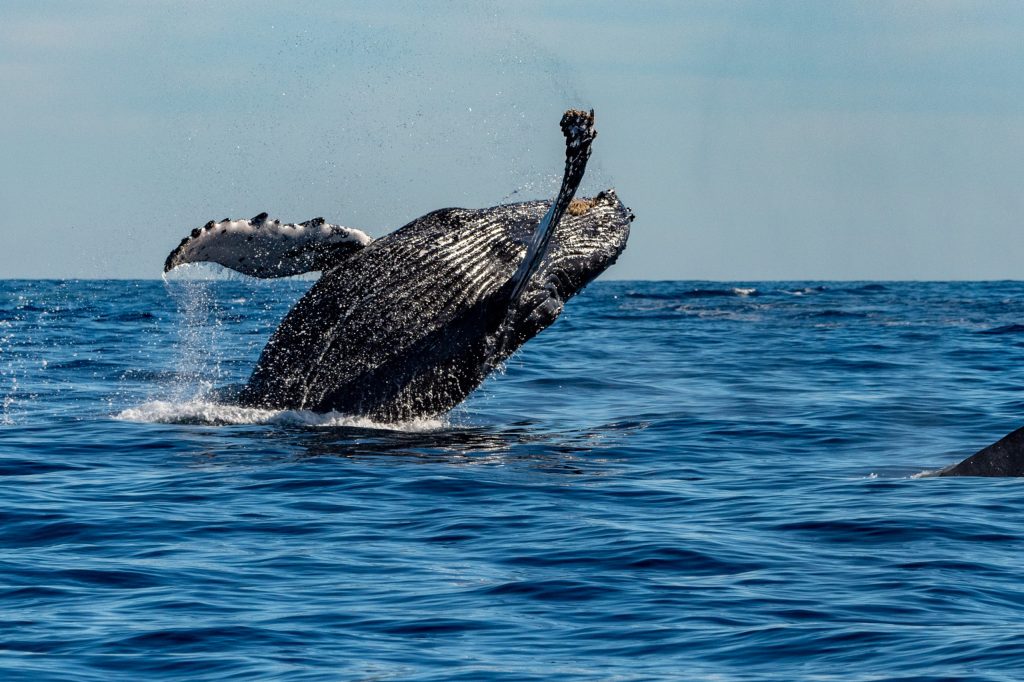Common Whale Watching Misconceptions

Whale watching is an activity that allows us to connect with nature in many ways. It is, for many reasons, a privilege to be able to sail at sea amongst the ocean’s spectacular wildlife, witnessing marine life in one of the most intimate ways possible. However, being that whale watching is such a miraculous opportunity, it is only natural that questions and misconceptions are brought up. Read below to learn about some common misunderstandings about whale watching.
You Can’t See Whales in the Rain
Although humans choose to avoid going outside when it’s raining, the same cannot be said when it comes to wildlife! Whales do not have the privilege to be picky about their way of life when it comes to poor weather. They have to come to the surface to both eat and breathe, giving us ample opportunity to spot them no matter what. Here at Next Level Sailing, we provide comfortable and safe solutions for whale watching during rainy weather.
You Can Only See Whales During a Certain Time of Year
While many places in the US offer seasonal whale watching trips, Southern California is lucky because whales and dolphins are able to be seen all year round!
During the winter months (December-February), whale watching in San Diego thrives thanks to the beautiful Gray Whales migrating south. Common Dolphins, inshore Bottlenose Dolphins, and Pacific White Sided Dolphins can also be spotted during these months.
With the weather warming up during the spring months (March-May), we are lucky to sight Gray Whales again as they begin their northbound migration through the coast. Abundant fish and krill make for the perfect feeding ground during this time, welcoming the beautiful Fin Whale into our waters. The Common Dolphins, Bottlenose Dolphins, and Pacific White Sided Dolphins can still be spotted regularly.
The summer months (June-August) bring one of the ocean’s greatest gems- the Blue Whale! Feeding on nutritious krill, these beautiful giants are not something you want to miss! Megapods of Common Dolphins can be seen during this time, searching for fish near other whale species, such as Humpback Whales, Fin Whales, and Minke Whales. If you’re lucky, some of the more exotic species are seen during the summer months, being the Bryde’s Whale, Sei Whales, and, more rarely, Pilot Whales.
With summer coming to a close, the fall months (September-October) are the best time to see the Humpback Whales, making their way further south. This species is known for their tail slapping, breaching, and lunge feeding, guaranteeing an eventful whale watching experience. Common Dolphins, Bottlenose Dolphins, and Risso’s Dolphins are often seen as well. For a couple of lucky whale watching trips, Orcas may be seen as they hunt for prey.
Only Small Boats Can Get Close to Whales
Legally, both small and large boats have to keep a certain distance from the whales. Being federally protected, it is up to your captain to follow these strict, but necessary rules. Lucky for us, Captain Troy does an excellent job at getting The Yacht America as close as legally possible. Using a large boat provides greater stability as well as the benefit of an open deck for the best viewpoint.
Whale Watching Harms Whales
Whales are precious to this Earth and we would never put them in harm’s way. As stated above, boats are legally required to keep a certain amount of distance between themselves and the whales. By providing one trip a day while also keeping our distance, we don’t disrupt their eating habits while simultaneously avoiding putting them through any distress. Our priority is to provide a peaceful experience for both the whales and people onboard.
